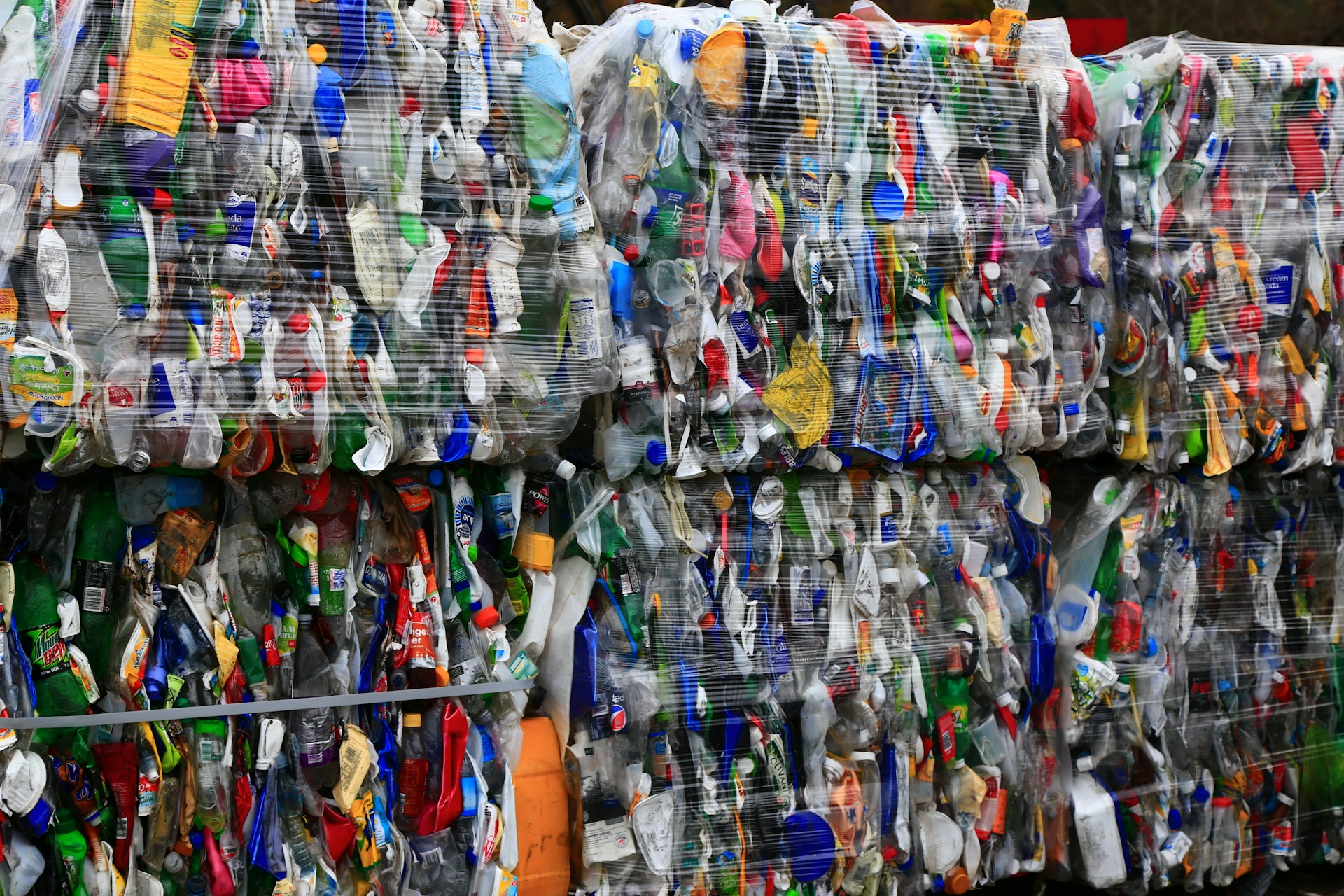Matthew Hyder, lead researcher at the University of Reading’s Department of Chemistry, and his team have developed a polymer adhesive that dissolves in alkaline solutions, enabling labels to be removed cleanly from plastic packaging and improving the quality of recycled plastic. This innovation addresses one of the long-standing challenges in plastic recycling; adhesive residues that contaminate recycled materials and reduce their usability.
Hyder, M. J., Godleman, J., Chippindale, A. M., Hallett, J. E., Zinn, T., Harries, J. L., & Hayes, W. (2025). Thermally and Base-Triggered “Debond-on-Demand” Chain-Extended Polyurethane Adhesives. Macromolecules, 58(1), 681–696. https://doi.org/10.1021/acs.macromol.4c02775
Recycling plastics is a key component of global efforts to reduce waste and conserve resources. However, one major obstacle has been the difficulty of removing labels and adhesive residues from plastic containers. Conventional adhesives are designed to provide strong, long-lasting bonding, which can become problematic once the material reaches recycling facilities. Residues left behind can compromise the quality of recycled plastics, limit their reuse in new products, and contribute to higher levels of waste.
Matthew Hyder from the University of Reading’s Department of Chemistry,
“Existing commercial adhesives can prove extremely difficult to remove from plastic surfaces because of their chemical composition. Our new polymer adhesive has been designed so that it can be removed from a plastic surface when exposed to basic or alkaline solutions. By making labels that can be removed completely, we are helping improve the quality of recycled plastic and its usefulness in its next life.”
The new polymer adhesive developed by Hyder and his team offers a solution. It maintains strong adhesion during everyday use, ensuring labels stay attached through shipping, storage, and handling. When subjected to alkaline or basic solutions during recycling, the adhesive chemically transforms, losing its sticking power and allowing labels to be removed efficiently.
Matthew Hyder explains, “Existing commercial adhesives can be extremely difficult to remove from plastic surfaces because of their chemical composition. Our polymer adhesive has been designed to be removable under specific chemical conditions. By making labels that can be completely removed, we are improving the quality of recycled plastic and increasing its usefulness in subsequent manufacturing processes.”
The research, published in Macromolecules, describes the design of a polyurethane adhesive incorporating sulfonyl ethyl urethane units. These units act as a chemical switch, responding to specific triggers. Exposure to basic solutions causes a reduction in adhesion, with tests showing up to 65 percent loss of sticking power across a range of surfaces.
Importantly, the adhesive performs well under normal conditions. It maintains strong adhesion at different temperatures and on multiple materials, including glass and aluminum, demonstrating suitability for diverse applications; from food and beverage containers to shipping packages and electronic devices. The adhesive’s performance under everyday conditions ensures it does not compromise product integrity before recycling.
The project was conducted in collaboration with Domino Printing Sciences PLC and the University of Reading. This partnership highlights the potential for practical, industry-ready solutions to emerge from academic research. By facilitating cleaner separation of labels and packaging materials, the adhesive could improve recycling workflows, reduce contamination in recycled plastics, and increase the proportion of material that can be reused effectively.
Cleaner separation and higher-quality recycled plastics could have multiple downstream benefits. For manufacturers, it means access to better-quality recycled feedstocks, potentially lowering production costs and reducing the need for virgin plastics. For consumers and waste management systems, it supports more efficient recycling processes, reduces the amount of plastic sent to landfills, and contributes to broader environmental sustainability goals.
Hyder emphasizes, “This development shows how thoughtful chemical design can tackle practical environmental problems. By designing adhesives with end-of-life recyclability in mind, we can make everyday products more sustainable without compromising their performance during use.”
The research team is exploring further refinements to the adhesive system, including variations in chemical composition to improve performance across different types of plastics and packaging materials. They are also investigating scalability and compatibility with existing recycling processes, aiming to support wider adoption in industrial applications.
As the global focus on sustainable materials grows, innovations like this polymer adhesive demonstrate the importance of integrating chemistry, materials science, and engineering to address practical challenges in resource management and environmental protection.

Adrian graduated with a Masters Degree (1st Class Honours) in Chemical Engineering from Chester University along with Harris. His master’s research aimed to develop a standardadised clean water oxygenation transfer procedure to test bubble diffusers that are currently used in the wastewater industry commercial market. He has also undergone placments in both US and China primarely focused within the R&D department and is an associate member of the Institute of Chemical Engineers (IChemE).



